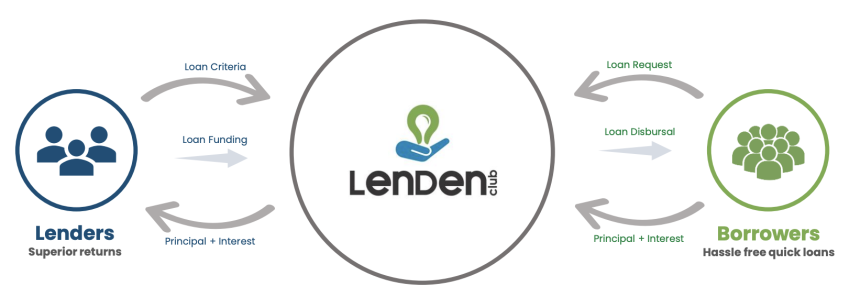
Peer-to-Peer Lending: A New Frontier in Borrowing
Peer-to-peer (P2P) lending, also known as person-to-person lending or social lending, is a relatively new and innovative form of borrowing and investing. It connects individual borrowers with individual lenders through online platforms. Here's an overview of how P2P lending works and its key characteristics:

How Peer-to-Peer Lending Works:
1. Online Platforms:
- P2P lending platforms operate online, acting as intermediaries that facilitate loans between individual borrowers and lenders.
2. Borrower Application:
- Borrowers apply for loans on the P2P platform by providing information about their financial situation, loan purpose, and creditworthiness.
3. Lender Registration:
- Individual lenders register on the platform, create profiles, and deposit funds into their accounts. Lenders can choose which loans they want to fund.
4. Loan Listings:
- The platform lists loan requests from borrowers, including details like loan amount, purpose, interest rate, and risk profile.
5. Loan Selection:
- Lenders review available loan listings and choose which loans to fund based on their risk tolerance and preferences.
6. Funding and Underwriting:
- Once a loan is fully funded by multiple lenders, the platform typically performs a credit check and underwriting process to assess the borrower's creditworthiness.
7. Loan Disbursement:
- Once the loan is approved, the funds are disbursed to the borrower. Borrowers then repay the loan in installments, including both principal and interest.
8. Repayments to Lenders:
- As borrowers make monthly payments, the platform distributes the payments to the lenders in proportion to their contribution to the loan.
9. Platform Fees:
- The P2P lending platform charges fees to both borrowers and lenders. These fees cover the costs of operating the platform.
Key Characteristics of P2P Lending:
1. Diverse Borrower Profiles:
- P2P lending can cater to a wide range of borrowers, including individuals seeking personal loans, small businesses, and borrowers with varying creditworthiness.
2. Risk and Returns:
- Lenders assume the risk of default by borrowers, but they can potentially earn higher returns compared to traditional savings accounts or other investments.
3. Diversification:
- Lenders can spread their investment across multiple loans to reduce risk. This diversification helps mitigate the impact of any single loan defaulting.
4. Transparency and Information Sharing:
- P2P platforms provide detailed information about borrowers, loan purposes, credit scores, and risk assessments, allowing lenders to make informed decisions.
5. Flexibility:
- Lenders have the flexibility to choose the loans they want to fund, the amount they want to invest, and the level of risk they're comfortable with.
6. Regulation and Oversight:
- P2P lending platforms are regulated by financial authorities in many countries to ensure compliance with lending and investor protection laws.
7. Secondary Market:
- Some platforms offer a secondary market where lenders can sell their loans to other investors if they wish to exit early.
8. Social Impact:
- P2P lending can provide access to credit for individuals or businesses that may have difficulty obtaining loans through traditional financial institutions.
It's important to note that while P2P lending can offer opportunities for both borrowers and lenders, it also comes with risks. Borrowers should carefully consider their ability to repay the loan, and lenders should be aware of the potential for borrower default. As with any financial investment, due diligence and risk assessment are crucial. Consulting with financial advisors or doing thorough research on P2P lending platforms can help individuals make informed decisions.





